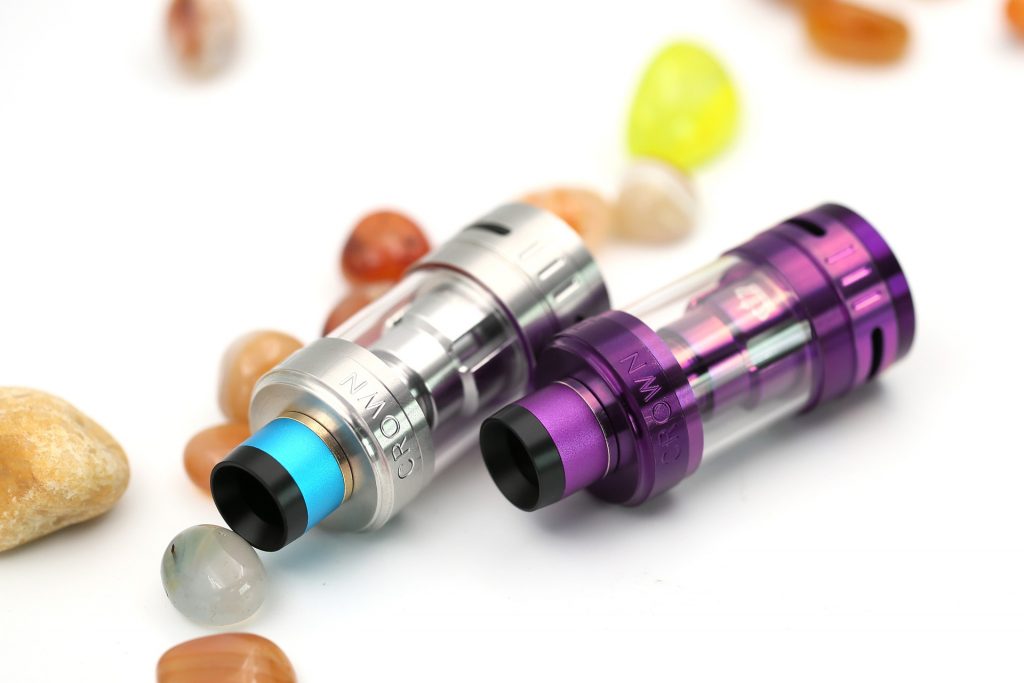Written by Mehr Bawa and Edited by Josephine Chan

In the age group of 19 to 22 year-olds, vaping of nicotine has doubled in the past two years, according to a national study by the University of Michigan [1]. This recent spike in e-cigarette usage is especially concerning given that vaping increases risk of contracting respiratory illnesses. E-cigarettes, the overarching term to describe electronic devices used to vape, can also refer to vape pens, vape boxes, juuls, e-hookahs, and e-pipes. Many of these devices contain an e-liquid, a fluid with propylene glycol, as well as vegetable glycerin, concentrated nicotine, and flavorings. Additionally, a lithium ion battery inside vape pens powers the atomizer, an element that provides heat to vaporize the e-liquid. Once vaporized, the user can then inhale the emissions [3]. The high concentrations of nicotine found within these devices are also extremely addictive.
The CDC has identified a national outbreak of E-cigarette or Vaping Product Use–Associated Lung Injury (EVALI). As of February 2020, there has been 2,807 hospitalized cases or deaths in the U.S. related to EVALI. Symptoms of this lung injury include coughing, shortness of breath, and chest pain. The CDC has linked EVALI with Vitamin E acetate, an additive in tetrahydrocannabinol (THC) containing vape products, which utilizes marajuana [4]. Furthermore, a University of California, Irvine (UCI) study that was recently published in September, found that the heating elements used in e-cigarettes could also play a role in further damaging one’s respiratory health [2]. Specifically, heating elements in vaporizers that use a nickel-chromium alloy are linked to EVALI in rodents. Importantly, the lung injury was observed without the presence of THC, nicotine, and Vitamin E, solidifying the case against general e-cigarette heating elements.
One chemical present in high concentrations in many vape products is nicotine, a highly addictive substance from tobacco plants. Once inhaled, nicotine reaches the brain within 10 seconds. Because nicotine’s biochemical shape is similar to that of acetylcholine, a natural chemical signaling molecule used to activate muscles, it binds to acetlylcholine’s receptor. In other words, both nicotine and acetylcholine act as two keys to the same lock and is easily taken up in the body. Once bound to the receptor, nicotine sends a signal to the brain to release dopamine, a pleasure-inducing chemical messenger. After nicotine is broken down in the liver, the brain begins to crave this pleasurable feeling, entering a withdrawal state. During this time, the body is sensitive to environmental cues that can prompt a to repeat the action that results in pleasure: vaping, thereby leading to addiction [5].
It is important to be an informed consumer and recognize the necessity for more work on vaping. Within the span of a year, some researchers have suggested that Vitamin E acetate is the cause behind EVALI, while others, like the team at UCI, have suggested that the nichrome heating element in vapes is to blame. With such controversy and uncertainty surrounding e-cigarettes, it is wise to stay away from vaping altogether.
References
- Schulenberg, J. E., Johnston, L. D., O’Malley, P. M., Bachman, J. G., Miech, R. A. & Patrick, M. E. (2020). Monitoring the Future national survey results on drug use, 1975–2019: Volume II, College students and adults ages 19–60. Monitoring the Future, 2:1-476.
- Kleinman, M. T., Arechavala, R. J., Herman, D., Shi, J., Hasen, I., Ting, A., Dai, W., Carreno, J., Chavez, J., Zhao, L., Kloner, R. A. (2020). E‐cigarette or Vaping Product Use–Associated Lung Injury Produced in an Animal Model From Electronic Cigarette Vapor Exposure Without Tetrahydrocannabinol or Vitamin E Oil. Journal of the American Heart Association, 9:e017368.
- Folan, P., Spatarella, A., Jacobsen, D., Farber, H. J., Moazed, F. “Vaping Electronic Nicotine Delivery Systems.” Vaping/E-Cigarettes, American Thoracic Society, 2020,
- “Outbreak of Lung Injury Associated with the Use of E-Cigarette, or Vaping, Products.” Smoking and Tobacco Use, Centers of Disease Control and Prevention, 2020, https://www.cdc.gov/tobacco/basic_information/e-cigarettes/severe-lung-disease.html . Accessed 9 October 2020.
- Raven, Kathleen. “Nicotine Addiction From Vaping Is a Bigger Problem Than Teens Realize.” Yale Medicine, 2019, https://www.yalemedicine.org/stories/vaping-nicotine-addiction/. Accessed 9 October 2020.
